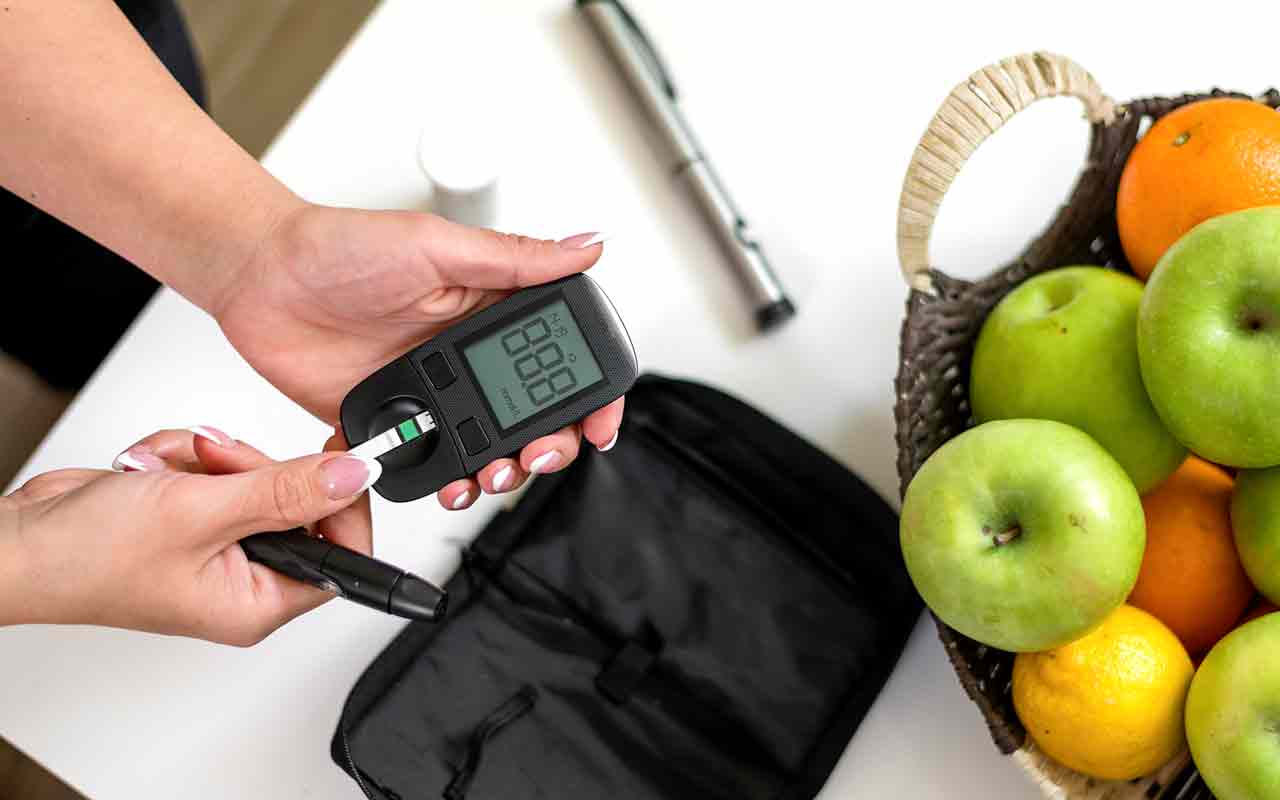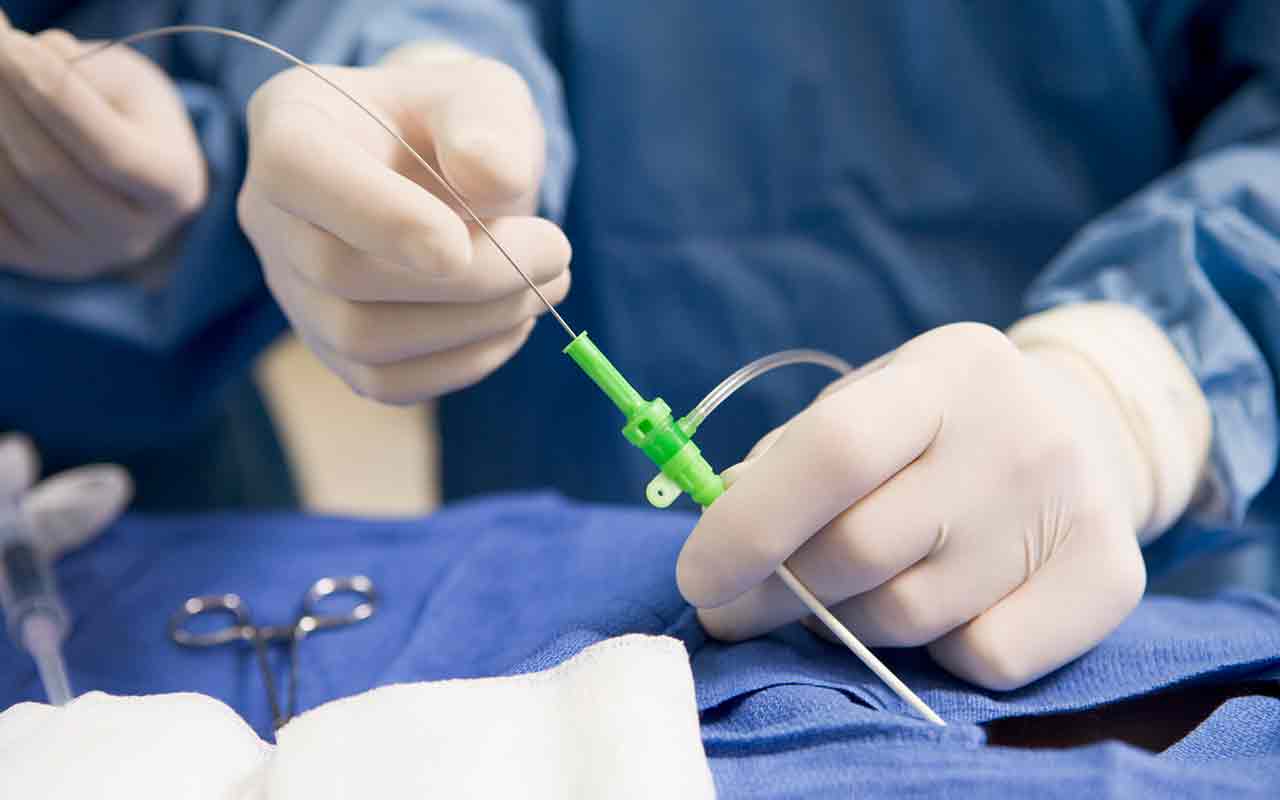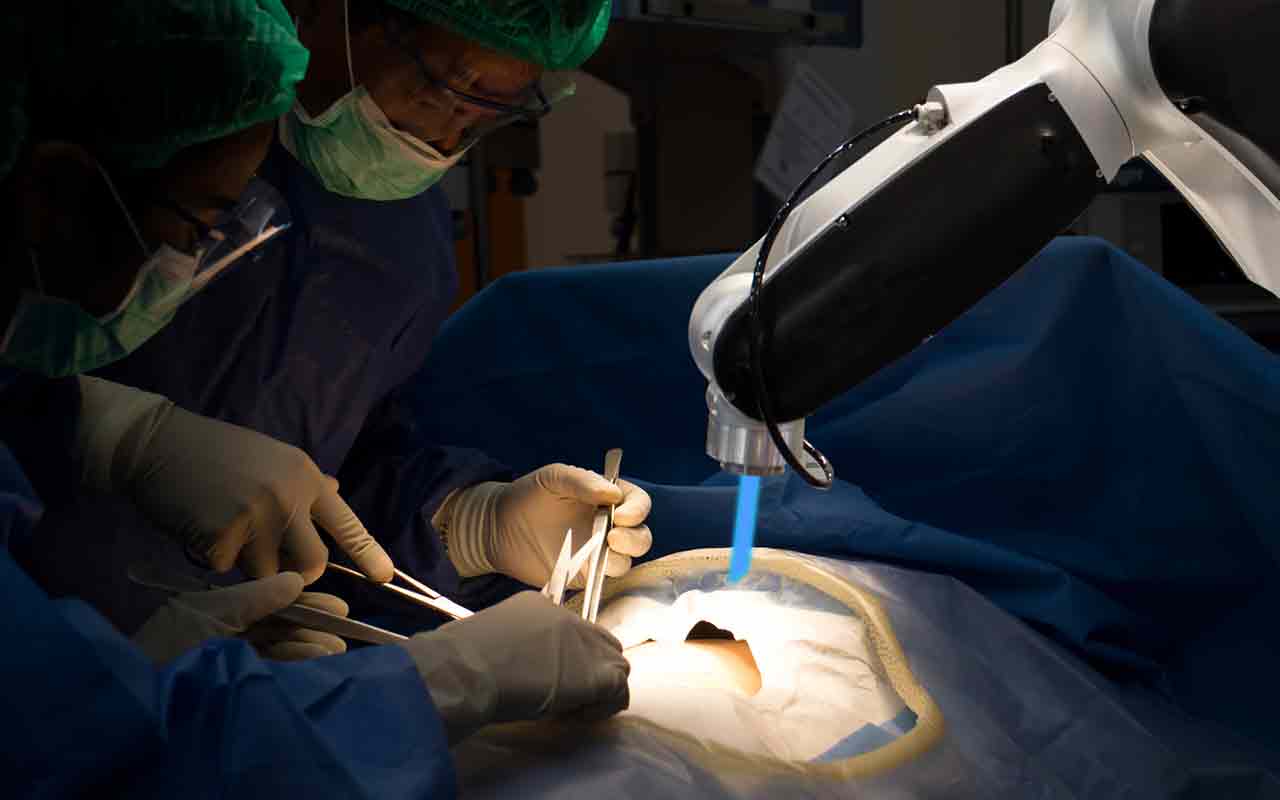6 Med-Tech and Medical-Device Stocks to Buy
Health care, which makes up nearly 18% of American GDP, has long been a fruitful hunting ground for investors seeking growth.


Health care, which makes up nearly 18% of American GDP, has long been a fruitful hunting ground for investors seeking growth. And medical-tech and medical-device stocks have always been particularly compelling niches.
Not only do these companies ride the coattails of inexorable health-care spending, but their commitment to research and development can create new industries that they can in turn dominate.
It's not an easy time right now, of course. The COVID-19 outbreak has taken a chunk out of every sector and almost every industry, with only a few "coronavirus stocks" enjoying any meaningful gains. Medical devices have at least been better than the market, which has declined by about 29% in this bear market so far, as measured by the S&P 500. But the iShares U.S. Medical Devices ETF (IHI) still has been cut to the tune of 25% in the same time frame.
That could provide investors with a chance to buy medical-device stocks and other med-tech plays at a significant discount, however. While their growth might be stunted in the short-term, their longer-term prospects are likely to improve again once the COVID-19 threat is contained – and a few are seeing additional business in the wake of the outbreak.
Here, we look at six med-tech and medical-device stocks to buy.
Data is as of March 17.

Agilent Technologies
- Market value: $21.3 billion
- Agilent Technologies (A, $68.87) is a life sciences and medical devices company that deals in everything from analytical instruments and genomics software to lab management and diagnostic testing.
Agilent had a few things going for it ahead of the coronavirus outbreak. For one, it closed on its $1.2 billion acquisition of Biotek in August, expanding the company's presence in the cell analysis market.
It also attracted high-profile investor Pershine Square Capital, which accumulated a nearly 2.92 million-share stake in the second half of 2019. "As of early November, its investment in Agilent had increased to 8.0%-9.5% of the firm's equity portfolio, worth as much as $690 million," writes Value Line analyst Nils Van Liew. Pershing Square took only two new positions last year: Agilent and Berkshire Hathaway (BRK.B). While Pershing has not indicated whether it will take an activist or passive role, the hedge fund clearly sees upside in the medical devices stock.
Agilent has outperformed the market by about 10 percentage points since the start of the bear market on Feb. 19, losing just about 19%. Part of that was helped by results for its fiscal first quarter ended Jan. 31, Agilent reported 5.7% year-over-year growth in revenues, and a 7% improvement in profits to 81 cents per share. The company described its gains "balanced … across all regions and end markets" – a promising sign for when the world begins to normalize again.

Quest Diagnostics
- Market value: $10.3 billion
- Quest Diagnostics (DGX, $77.46), provides clinical laboratory testing services used by physicians in the detection, diagnosis and treatment of diseases.
Volume gains have been thin, keeping both revenue and profit growth in the low single digits. Revenues for 2019, for instance, improved just 2.6% year-over-year, while adjusted earnings per share grew by 4%.
Quest's total addressable market appears to be growing on the increase in drug testing across various industries – a perverse upside of the opioid epidemic. "Testing for drug abuse is becoming more vital for numerous industries," Value Line analyst Erik Manning says. "A higher percentage of people nationwide tested positive for a controlled substance in 2018 than in the years before that. More companies being wary of this phenomenon and testing in earnest should aid volume gains at Quest in the years to come."
Partnerships, as well as mergers and acquisitions, could also drive volumes in the years ahead. Last spring, Quest announced that it became a preferred lab provider for UnitedHealth Group (UNH), the largest health insurer in the United States with 48.9 million "fully benefited" people on its rolls.
Reimbursement rates are a concern, but perhaps a silver lining as well. The Clinical Laboratory Fee Schedule put in place reimbursement cuts, capped at 10% from 2018 to 2020, then capped at 15% from 2021 to 2023. These decreases are difficult for labs across the board, but they affect smaller ones disproportionately. That might provide grist for Quest's ongoing M&A program; since December, the company has acquired two other lab companies.
Much of this potential – especially industry drug testing – is put on pause amid the coronavirus outbreak, though DGX is beginning to test for COVID-19, which could help blunt weaknesses in other areas of the business.

Edwards Lifesciences
- Market value: $36.2 billion
- Edwards Lifesciences' (EW, $173.14) is among the more specialized medical devices stocks.
While the company deals in things such as surgical monitoring and critical care, the Transcatheter Aortic Valve Replacement (TAVR) represents a whopping 60%-plus of Edwards' revenues, and in large part, is what has driven optimism in shares. For instance, the company recorded 40% year-over-year growth in TAVR sales during its fourth quarter, including 20% growth in revenues outside the U.S.
Management seemed optimistic going into 2020 raising the bottom end of its earnings and TAVR guidance and has indicated to analysts it expects hit the top end of its guidance forecast. "The company is well-positioned for the long haul," wrote Value Line analyst Kevin O'Sullivan. "The success of TAVR have driven Edwards' shares higher over the last six years, and the therapy continues to be a preferred option for patients."
EW's other businesses include Surgical Structural Heart and Critical Care, which had flat and roughly 8% growth, respectively. It's also investing heavily in its Transcatheter Mitral and Tricuspid Therapies (TMTT) – sales there are currently negligible, but it offers a constructive setup for long-term growth.
EW shares, like many other medical devices stocks, are down considerably amid the coronavirus-inspired bear market. But this doesn't appear to be an existential crisis for Edwards, which makes this a potential opportunity to get a nicely growing stock at a considerable discount.

Illumina
- Market value: $30.8 billion
On the first day of business in 2020, genome sequencing stock Illumina (ILMN, $209.20) announced that it had terminated the proposed acquisition of UK-based Pacific Biosciences (PACB). The termination of that deal, which was predicated on 1+1=3 synergies, took the punch out of ILMN shares, which began their decline well ahead of the rest of the market.
Still, failures on the M&A front don't undermine the enormity of Illumina's market opportunity. ILMN provides genetic sequencing services for research organizations, governments, hospitals, drug development companies and even consumer genomic companies such as Ancestry.com.
The first genome was successfully sequenced in 2008, requiring several weeks of time and coming at a cost of approximately $1 million. Today, the process takes just a few hours and costs less than $1,000. This shift has ballooned the size of the genomic analysis market, where Illumina is the undisputed leader with an estimated share of 80%. ILMN bulls say continued advances in sequencing will further bolster that market.
Recent performance figures seem to support this. Full-year 2019 revenues improved 6% year-over-year, on the strength of a 10% improvement during Q4. (Researchers at CFRA expected 2020 revenues to grow another 10%, but it remains to be seen how the coronavirus impacts that.) Profits jumped 21% year-over-year.
Furthermore, Illumina posted a record 2,400 shipments of sequencing systems last year. As the installed base of Illumina sequencing systems grows, so too do sales of so-called sequencing consumables; last year, sequencing consumables revenues grew a robust 14% year-over-year to $572 million.
CFRA analyst Sel Hardy raised his rating to buy from hold in January with a target price of $345. "We think Illumina is well positioned to see continued momentum into 2020 driven by solid growth for NovaSeq sequencing platforms and related consumable products." While ILMN has declined alongside the market, analysts aren't rushing to change their opinions on the stock. According to TipRanks, analysts who have sounded off over the past quarter have a consensus price target of $344.29, implying about 65% upside from here.

Intuitive Surgical
- Market value: $47.5 billion
- Intuitive Surgical (ISRG, $406.70) is the leader in robotic surgery. Doctors in 67 countries have performed more than 7.2 million procedures using one of the company's 5,582 of its da Vinci surgical systems.
ISRG was one of the market's hottest growth stories a few years ago, with the stock gaining more than 170% between the start of 2017 and October 2018. But the stock had been tepid since then, and has fallen a little more sharply than the S&P 500 at 33% losses in this bear market.
That tepid growth perhaps was owed to more modest guidance growth in procedure volume and gross margin. Intuitive Surgical has a well-known habit of under-promising and over-delivering, but the play here is long term, even in the face of incoming and/or mounting competition from formidable med-tech stocks as Medtronic (MDT) and Johnson & Johnson (JNJ).
But even if competition heats up, the growth in surgical procedures is inexorable, and the adoption of robotics for more surgical procedures is inevitable. As CFRA analyst Kevin Huang writes in note to investors, "Given the high switching costs of robotic surgery platforms, we expect ISRG to have more loyal customers than in most other industries."
ISRG is hardly cheap even after being cut by a third, trading at 42 times forward-looking profit estimates. But analysts are expecting the company to average double-digit growth over the next five years – which could send ISRG rebounding once we're out of the worst of the coronavirus danger.

NuVasive
- Market value: $1.7 billion
- NuVasive (NUVA, $32.82) is a global manufacturer of medical devices for spinal disorders. Its X360 System, for instance, is a quicker and less invasive procedure than traditional lateral single-position surgery.
The company released fourth-quarter and 2019 earnings at the end of February registering 6.6% growth in revenues and an 11% improvement in profits. On an adjusted basis, that backs out the impacts of litigation, business transition and tax expenses, the bottom line jumped by more than 400%.
The upside for NuVasive is likely to occur in its international business, which now accounts for about 20% of sales. For the full year, the company's international unit grew about 13% overall and more than 20% in Europe, according to Credit Suisse analyst Matt Miksic. This compares to domestic sales at about 6.5% growth. Further Miksic anticipates new product introductions to be an important source of growth for NuVasive which "launched 16 new products in 2019, and expects to launch 12 more in 2020. We see increased adoption … as driving growth in 2020 and beyond."
Broadening the product portfolio has been an important component of NuVasive's growth strategy. In November, NuVasive recently received FDA clearance for its cervical spine fusion solutions. New products and approvals offer a promising set-up for 2020 and beyond.
NUVA is the smallest and most speculative of these medical-device stocks, and it has been battered by nearly 60% so far in the market's bear run. But it didn't help that NuVasive was one of the most expensive stocks in the sector as the bull market peaked. Even now, after losing nearly two-thirds of its value, it still trades for 30 times forward-looking earnings estimates.
NuVasive might continue to take its lumps if panic selling continues to grip the market. But its price is finally starting to align better with its growth prospects, which could result in a considerable rebound later this year or in 2020.
Profit and prosper with the best of Kiplinger's advice on investing, taxes, retirement, personal finance and much more. Delivered daily. Enter your email in the box and click Sign Me Up.

Website: gorillatrades.com
LinkedIn: Gorilla Trades
Phone: (866) 222-6639
Ken Berman has been buying and selling stocks since he was a teenager and met with early success trading then-fledgling biotech stocks like Amgen, Biogen and Immunex. He later became a broker and worked for two wire houses, where he developed a proprietary system for buying and selling equities. In 1999, Mr. Berman formalized his method under the Gorilla Trades name and now has subscribers in the U.S. and 55 other countries around the world.
-
 Gold and Silver Shine as Stocks Chop: Stock Market Today
Gold and Silver Shine as Stocks Chop: Stock Market TodayStocks struggled in Friday's low-volume session, but the losses weren't enough to put the Santa Claus Rally at risk.
-
 Don't Wait Until January: Your Year-End Health Checklist to Kickstart 2026
Don't Wait Until January: Your Year-End Health Checklist to Kickstart 2026Skip the fleeting resolutions and start the new year with a proactive plan to optimize your longevity, cognitive health, and social vitality.
-
 Premium Rewards Cards: More Perks, Higher Fees
Premium Rewards Cards: More Perks, Higher FeesSome issuers are hiking the annual fee on their flagship luxury credit cards by hundreds of dollars. Are they still worth using?
-
 Gold and Silver Shine as Stocks Chop: Stock Market Today
Gold and Silver Shine as Stocks Chop: Stock Market TodayStocks struggled in Friday's low-volume session, but the losses weren't enough to put the Santa Claus Rally at risk.
-
 The Santa Claus Rally Officially Begins: Stock Market Today
The Santa Claus Rally Officially Begins: Stock Market TodayThe Santa Claus Rally is officially on as of Wednesday's closing bell, and initial returns are positive.
-
 'Humbug!' Say Consumers, Despite Hot GDP: Stock Market Today
'Humbug!' Say Consumers, Despite Hot GDP: Stock Market Today"The stock market is not the economy," they say, but both things are up. Yet one survey says people are still feeling down in the middle of this complex season.
-
 Stocks Rise to the Spirit of the Season: Stock Market Today
Stocks Rise to the Spirit of the Season: Stock Market TodayInvestors, traders and speculators are beginning to like the looks of a potential year-end rally.
-
 Nasdaq Leads as Tech Stages Late-Week Comeback: Stock Market Today
Nasdaq Leads as Tech Stages Late-Week Comeback: Stock Market TodayOracle stock boosted the tech sector on Friday after the company became co-owner of TikTok's U.S. operations.
-
 Cooler Inflation Supports a Relief Rally: Stock Market Today
Cooler Inflation Supports a Relief Rally: Stock Market TodayInvestors, traders and speculators welcome much-better-than-hoped-for core CPI data on top of optimism-renewing AI earnings.
-
 Nasdaq Sinks 418 Points as Tech Chills: Stock Market Today
Nasdaq Sinks 418 Points as Tech Chills: Stock Market TodayInvestors, traders and speculators are growing cooler to the AI revolution as winter approaches.
-
 Stocks Chop as the Unemployment Rate Jumps: Stock Market Today
Stocks Chop as the Unemployment Rate Jumps: Stock Market TodayNovember job growth was stronger than expected, but sharp losses in October and a rising unemployment rate are worrying market participants.
